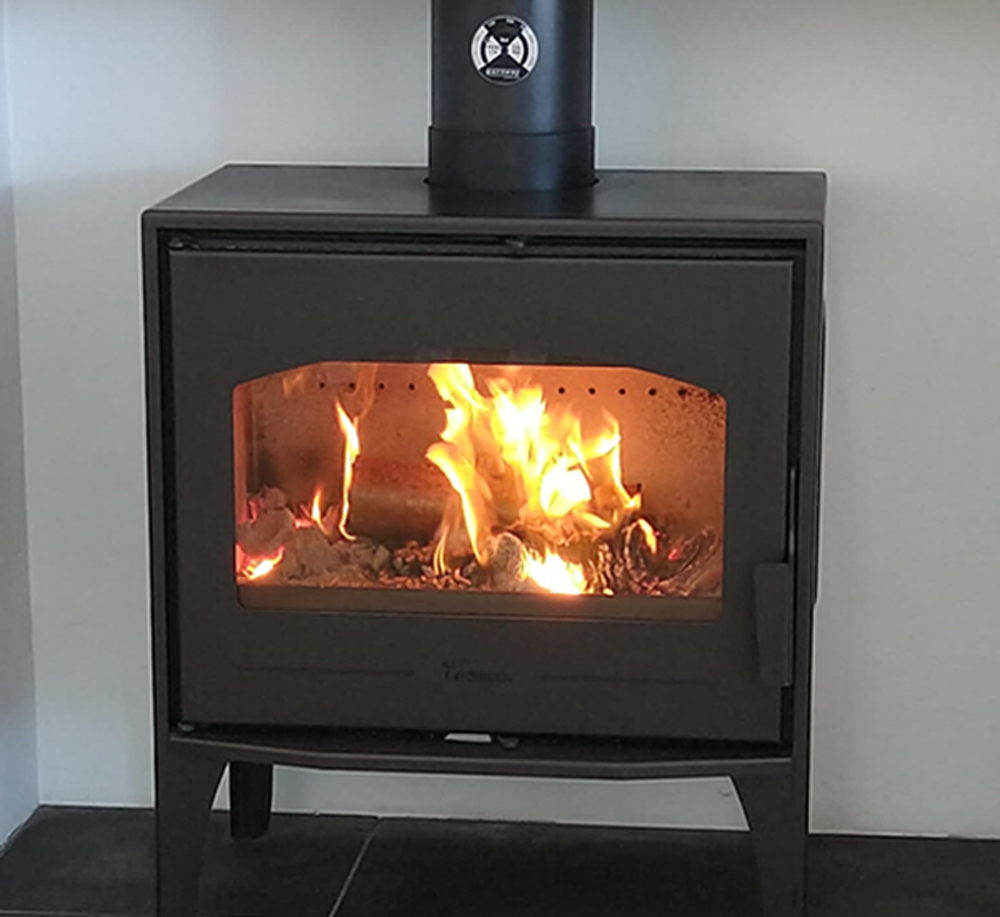
Creosote from burning wood is a problem. Burning wood, no matter how you do it, releases pollutants, mainly in the form of gases and particulate matter. There is no avoiding it, but how you control it within your wood burning appliance can vary greatly – not only in the type of stove you choose, but in how you operate it as well.
One of the main problems of wood burning is the excessive build-up of creosote in chimneys and stove pipes. It is a fact that operating a wood stove is a combination of science and art, a large part of which is dealing with creosote.
What is creosote
Creosote is the sticky, foul-smelling substance that coats the insides of everything it passes through if no precautions are taken. It is formed when the smoke gases given off in the burning process condense and combine with soot on their way out of the chimney. It is corrosive and extremely combustible and can even cause chimney fires.

You may not notice creosote build-up at first, but it tends to feed on itself. As it builds up, it restricts the flow in the chimney or flue pipes.
The build-up slows down the smoke gases even more. This allows more time for the smoke to cool and condense, therefore causing more creosote to deposit itself, and further restrict the flow.
My wood stove creates creosote!
A correctly installed modern wood burning stove does not create creosote. It is caused by you not using the stove correctly, and especially when you burn damp un-seasoned wood.
Temperature control
Always burn a stove at the correct temperature. Never pack it full of wood and restrict the airflow to produce a long, slow burn.

To burn a stove properly, a stove pipe thermometer is essential. The most common type is a magnetic clamp-on that is attached to the stove pipe above the stove. They are slower to react and not as accurate as probe types but they will tell you all you need to know to ensure the stove is operating at the correct temperature.
Do not allow the wood to smoulder. If you don’t operate the stove at the correct temperature creosote will build up.
Always use dry wood
All firewood contains water to some extent. The water content of the wood you burn is critical to the burning process and the amount of creosote produced. The lower the moisture content, the better and hotter your stove will burn.

Wood dried outside but undercover, and stacked where the wind will blow through it, will typically end up with about 15-20% moisture content after a year.
Keeping the wood even longer before use is even better for the burning process. If you can get the moisture content below 15% you will notice the difference even more.
An important point to remember is that all the water contained in the wood is turned to steam as the wood burns. This means you are wasting energy creating steam, which then disappears up the chimney, instead of heating the room.
You can’t eliminate it, but you will keep creosote to a minimum by using wood which has been seasoned for 1-2 years, and burning your stove at the correct temperature.
10 Tips for using your Wood Burning Stove
- Keep your air controls open to allow plenty of oxygen in while using your stove.
- Start your fire with clean newspaper or dry kindling.
- Don’t burn anything other than clean, dry wood that has been properly seasoned.
- Avoid burning fibre board, treated wood, stained wood, painted or wet wood.
- Burn hot, bright fires. Avoid fires that smoulder.
- Let the fire burn down to embers then rake them into a mound towards the air inlet and wood stove door. Don’t spread the embers out flat.
- Reload the wood stove adding two or three pieces at a time, placing the wood on, and behind, the hot embers. Do not overload the stove.
- In milder weather, burn smaller fires.
- Keep the doors of your wood stove closed at all times, unless you are loading it with wood.
- Don’t allow ash to completely fill the ashpan.
